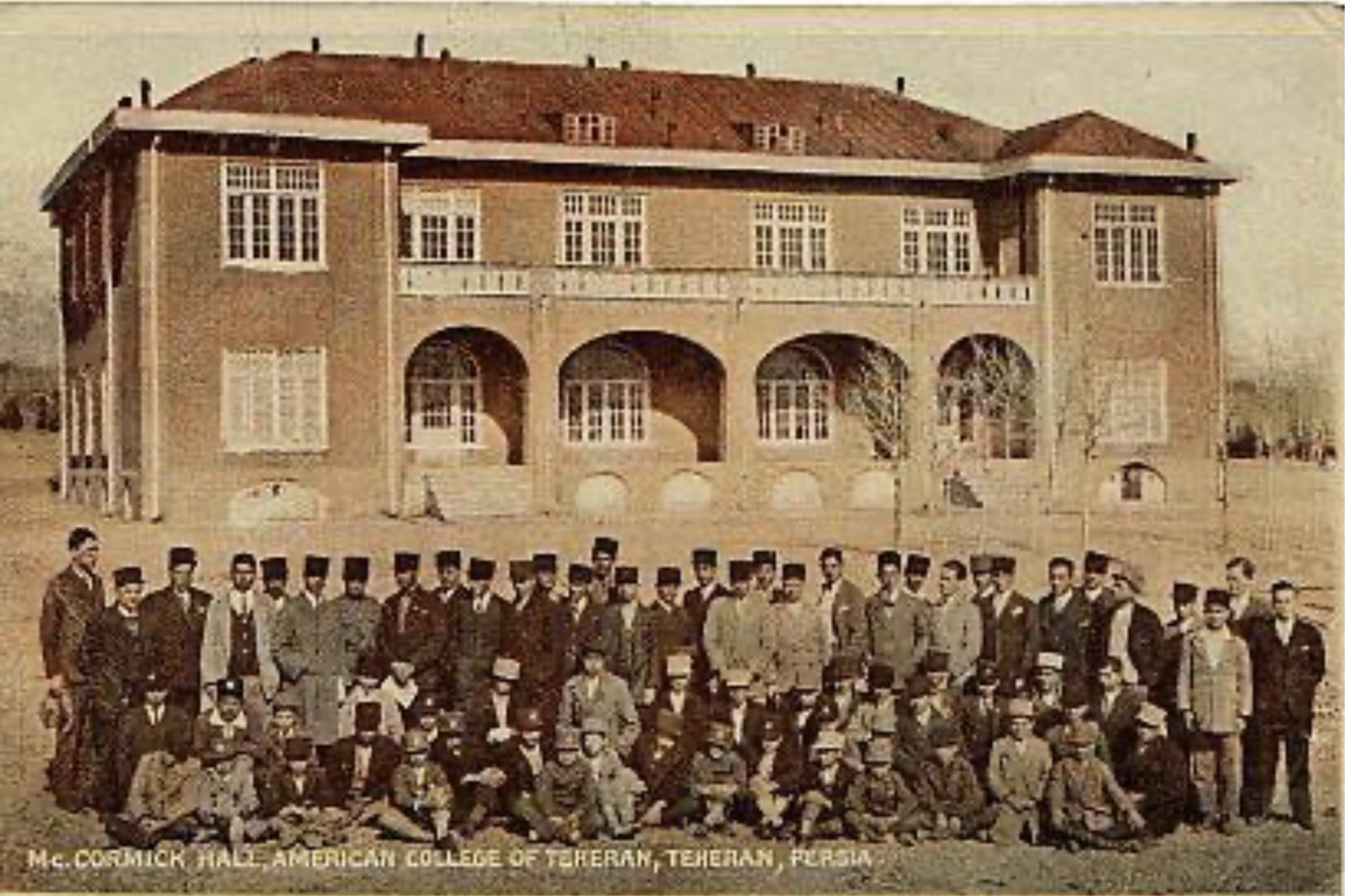The American Missionary Who Built Alborz High School and Transformed Iranian Education

A summary of Fred Petrossian’s article on “Article 18”
More than a century ago, an American missionary named Samuel M. Jordan founded one of the most influential educational institutions in Iran, shaping generations of intellectuals and civic leaders. A Princeton theology graduate—whom the poet laureate Malek o-Shoara Bahar once called “the physician for the ailment of ignorance”—Jordan inspired students to embrace patriotism and public service, particularly during times of famine and disease. Both the Qajar and Pahlavi governments later honored him for his contributions to Iranian society.
Jordan played a pivotal role in modernizing Iran’s education and sports systems and was among the early pioneers of the Scouting movement in the country. He believed education should be accessible to everyone—regardless of religion, ethnicity, or social class—and was also a firm advocate for gender equality.
From Lafayette to Tehran
Samuel Martin Jordan was born on January 6, 1871, in Pennsylvania, U.S.A., named after his distinguished clergyman ancestor. After graduating in theology from Princeton University in 1898, he was deeply influenced by his time at Lafayette College, known for its global missionary outreach. Jordan was an active member of the YMCA and the Franklin Literary Society, experiences that helped form his educational philosophy emphasizing both intellectual and physical development.
The historical connection between Lafayette College and the American Boys’ School in Tehran eventually led to the founding of Tehran American College, later known as Alborz High School. Jordan, along with his wife Mary Wood Park Jordan and colleagues like Arthur Boyce, helped expand and professionalize the institution. Because of its close ties to Lafayette, Alborz became known as the “Lafayette of Iran.”
From a Modest School to a Modern High School
In 1898, Samuel and Mary Jordan arrived in Tehran. A year later, he took charge of a small elementary school originally established by American missionaries in 1873. Over the next four decades (1899–1940), he transformed it into a modern secondary institution located at Tehran’s College Square.
Jordan’s network of supporters from Lafayette helped raise funds, including major donations from American philanthropist Mr. Ralston, who financed the construction of the main campus building designed by Georgian architect Nikolai Markov.
A Model of Education, Sports, and Discipline
By the mid-20th century, Alborz High School had become one of the most advanced educational centers in Iran. By 1945, it housed a library of over 13,000 books, as well as laboratories, dormitories, and sports fields. Jordan believed in experiential learning, introducing practical training and extracurricular activities that encouraged responsibility, teamwork, and curiosity.
Oxford scholar Homa Katouzian, himself an Alborz alumnus, recalled:
“Teaching at the College was based on extraordinarily high standards—disciplined yet not harsh. Jordan and his colleagues had established truly exceptional principles of education and character-building.”
Philosophy and Values
The intellectual foundations of Jordan’s approach stemmed from Protestant (Evangelical) ethics, emphasizing moral conduct, hard work, gender equality, patriotism, and faith in democracy. As one of his students, Yahya Armajani, later wrote, the school’s motto was:
“To love and serve humanity.”
Students practiced this through hands-on acts—tree planting, literacy campaigns in rural areas, and community service projects.
Influenced by John Dewey’s progressive educational philosophy, Alborz replaced rote memorization with experiential, creative learning, which later shaped broader educational reforms in Iran.
Women Who Changed Education
Women missionaries also played a vital role. Mary Jordan, Samuel’s wife, taught English and music and composed the first Persian-language hymns. Annie Boyce, wife of Arthur Boyce, managed the dormitory, taught classes, and co-founded the Bethel Girls’ School and the women’s magazine Alam-e Nesvan (“The World of Women”).
Among their students was Parvin E’tesami, one of Iran’s greatest poets. Mary Jordan often told her pupils:
“No nation rises higher than the level of its women.”
Students were required to write essays reflecting on this statement.
Education Without Barriers
Jordan’s vision of Alborz was rooted in equality and inclusion. As historian Houshang E. Chehabi (Boston University) notes, the school welcomed Muslims, Zoroastrians, Christians (Armenians and Assyrians), Jews, and Bahá’ís alike. Students from different classes, faiths, and backgrounds studied, ate, and played together.
To maintain accessibility, Jordan charged higher tuition to wealthy families and used that revenue to subsidize poorer students. He famously said:
“From nine rich families, we collect enough to educate ten poor students for free.”
A Life Transformed: The Story of Abolqasem Bakhtiar
Perhaps the most touching example of Jordan’s influence is Abolqasem Bakhtiar, a 39-year-old laborer who once escorted wealthy boys to Alborz. Recognizing his potential, Jordan admitted him as a student. Bakhtiar graduated, went on to study medicine at Syracuse University in the U.S., and returned to Iran as the country’s first U.S.-trained surgeon. Later, with his American wife Helen Jeffries, he co-founded the Tehran University School of Medicine.
Sports, Scouting, and Social Responsibility
At a time when sports were considered inappropriate for Muslim boys, Jordan and his colleague Arthur Boyce introduced games, physical education, and inter-school competitions. Alborz became the cradle of organized sports in Iran, with the first professional basketball and volleyball teams trained there.
Jordan also founded Iran’s first Boy Scout camp in 1912, encouraging hiking, teamwork, and leadership.
During World War I (1916–1918), when famine and disease devastated Iran, Alborz students participated in relief work, food distribution, and public health campaigns—turning the school into a hub of civic engagement.
Music and the Arts: Breaking Taboos
In early 20th-century Iran, music was often frowned upon in public life. Mary Jordan broke this taboo by introducing music education and leading the first school choir. In 1928, the Alborz choir recorded the hymn “Daram Az Khodast” (“All I Have Is from God”)—one of the first recorded music pieces in Iran—featuring 500 student voices.
A Lasting Legacy
Through 41 years of leadership, Samuel Jordan transformed a small missionary school into a modern, inclusive, and forward-thinking educational institution that continues to inspire Iranians.
He left behind far more than a school; he left behind a vision—of an Iran that learns, grows, and builds bridges across boundaries of faith and class.
Read the full article here: https://articleeighteen.com/fa/articles/20116/

